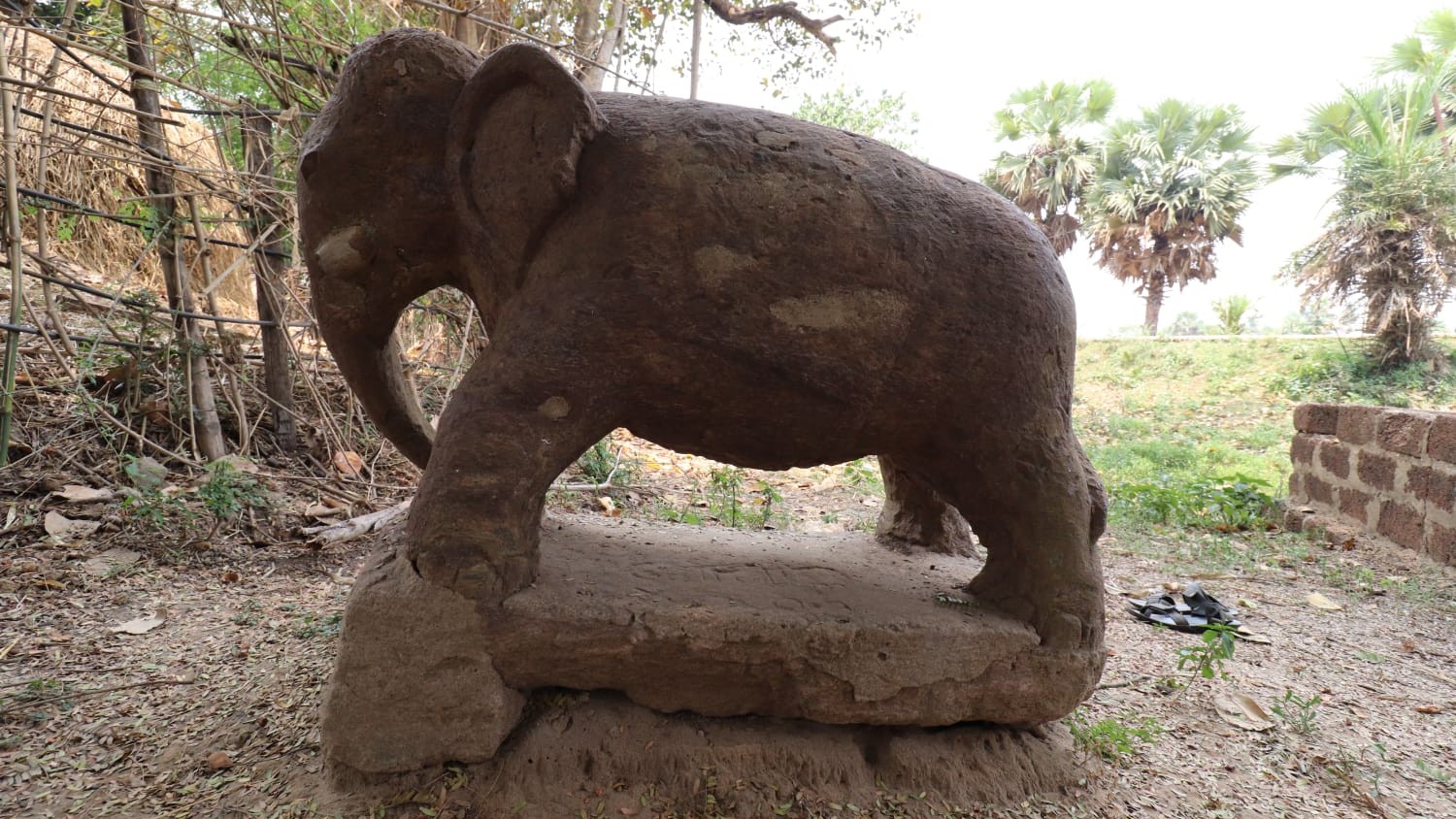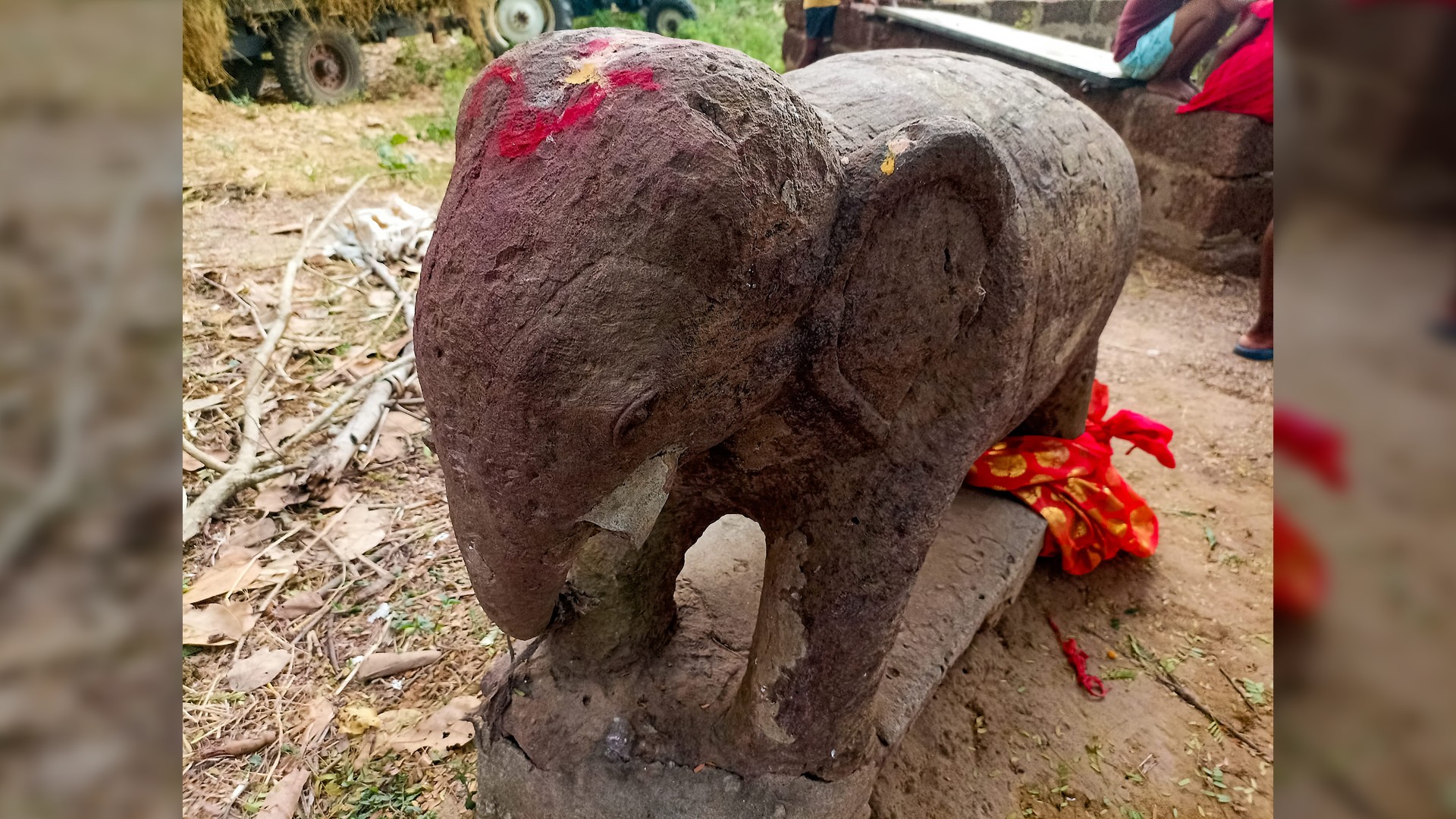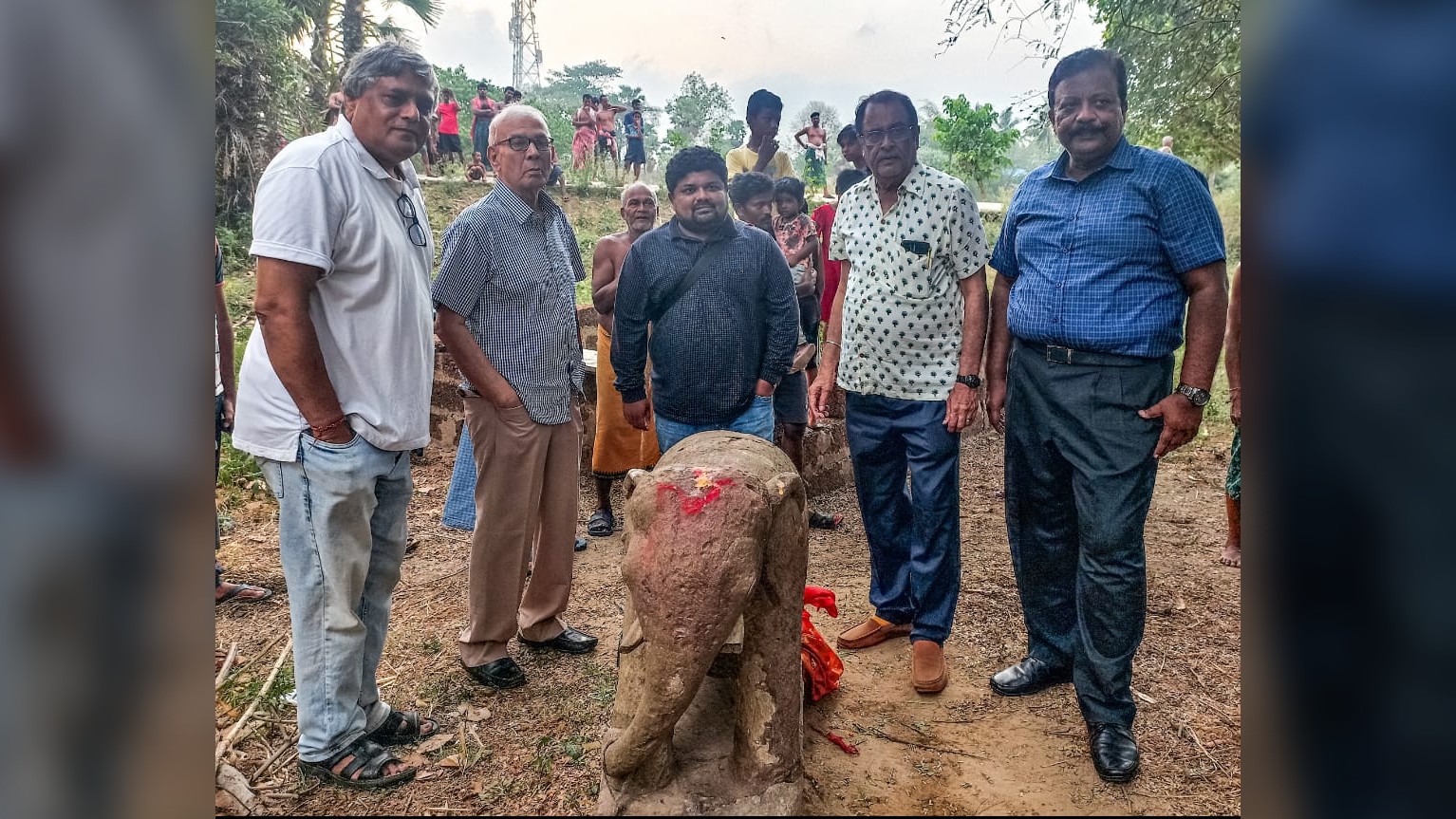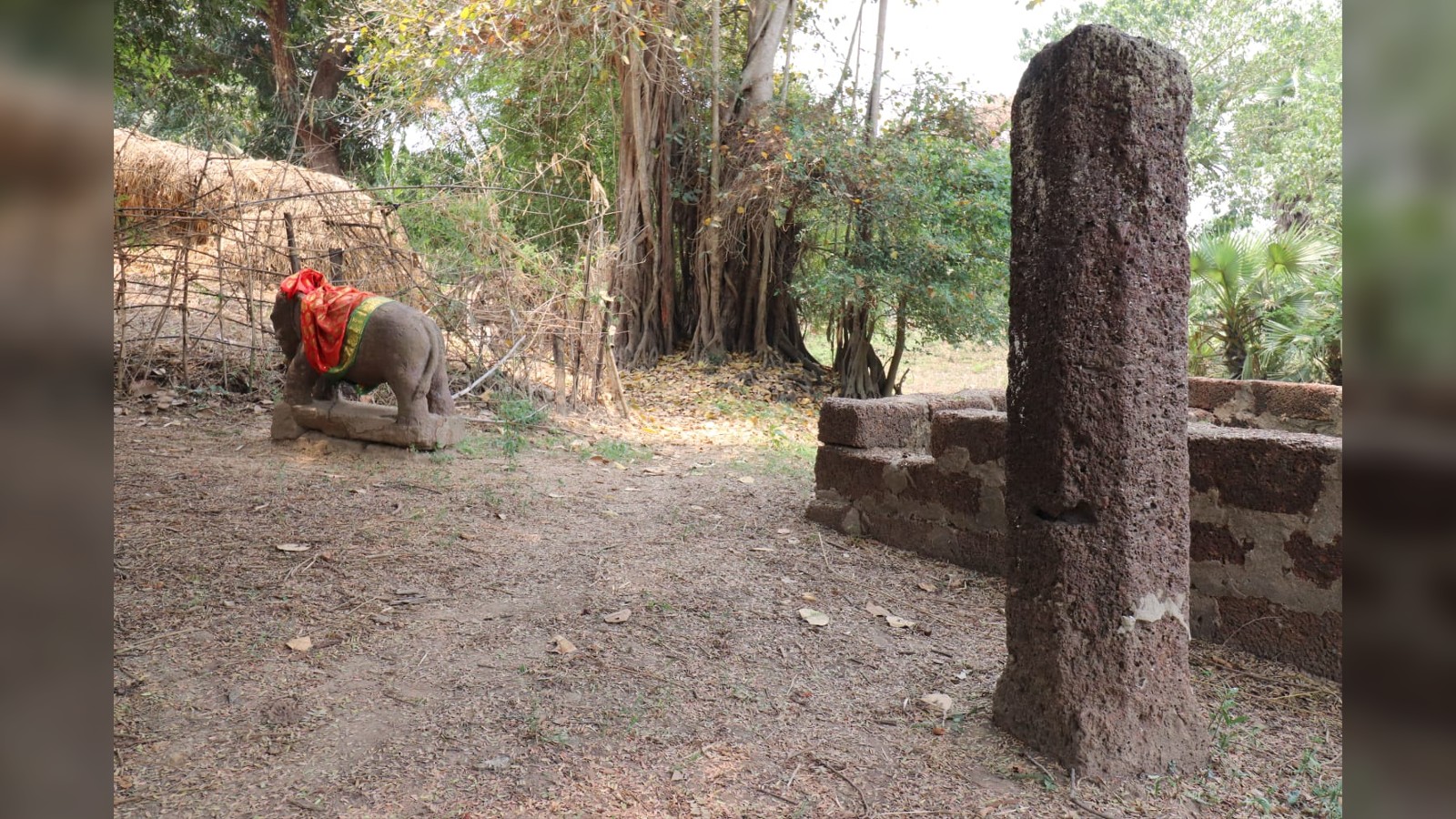
Archaeologists in eastern India have unearthed a statue of an elephant they think was carved about 2,300 years ago, when Buddhism was the main religion in the region .
The statue is about 3 feet (1 meter) high and carved from rock in the same style as other Buddhist statues of elephants found across the state of Odisha.
Historian Anil Dhir and other members of an archaeological team from the Indian National Trust for Art and Cultural Heritage (INTACH) unearthed the statue in April at a village on the banks of the Daya River in Odisha's Puri District. "We were surveying the Daya River Valley to document its heritage," Dhir told Live Science in an email. "This area is rich in artifacts from the ancient Buddhism which flourished here."

The team found several other buried archaeological relics around the village, including architectural pieces from a Buddhist temple, he added.
Related: 1st-century Buddha statue from ancient Egypt indicates Buddhists lived there in Roman times
The elephant statue is very similar to one found at Dhauli, also known as Dhaulagiri, an ancient center of Buddhism about 12 miles (19 kilometers) upstream, Dhir said. That statue has been dated to between 272 B.C. and 231 B.C.
Buddha and Hinduism

Buddhism originated in northern India in the sixth or fifth century B.C. and was one of the main religions under Emperor Ashoka of the Maurya Empire in the second century B.C., the historian Upinder Singh of Ashoka University in India wrote in "History of Ancient and Early Medieval India: From the Stone Age to the 12th Century" (Pearson India, 2009). The empire covered most of India, including what's now Pakistan, but not the very south of the subcontinent.
And from the third century B.C. until about the second century A.D., Buddhism "held sway" throughout much of India and the Odisha region in particular, Dhir said.
But Buddhism's influence declined as its practices became assimilated into the myriad traditions of Hinduism and when Islam became more influential in the region after the 10th century; and while Buddhism is now widespread in other parts of Asia, it is only followed by about 0.7% of the modern population of India, according to a 2011 census. (The Buddha is worshipped, however, in some Hindu ceremonies, sometimes as an avatar of the god Vishnu.)
According to a statement by INTACH, the floodplains of the Daya and Mandakini rivers are rich in Buddhist antiquities.
Records also suggest that a fort was built at the site in the 16th century, and the INTACH team has found remnants of its defensive walls and moat.
Elephant symbolism

Dhir said the elephant was a common motif in Buddhism and could be seen in many Buddhist monuments.
The INTACH statement said the recently unearthed elephant statue was found near a pillar of laterite — a reddish clay material — and other stone blocks: Similar finds were also discovered alongside another elephant statue found in the village of Kaima in Odisha's Jajpur District.
Art historian Christian Luczanits of SOAS at the University of London told Live Science that elephants were important royal animals in ancient India and symbolized the monsoon rains and fertility.
Peter Harvey, a historian of Buddhism and a "faith advisor" at York St John University in the U.K., added that the elephant was also the mythical animal ridden by the pre-Buddhist god Indra, who was identified in early Indian Buddhism as a disciple of the Buddha and named Sakka (also spelled Śakra).
The elephant's direct connection to Buddhism came about from a story that the mother of Siddhartha Gautama — the Indian prince who would become the Buddha — dreamt after he was conceived that "an auspicious white elephant [had] entered her womb," Harvey said.







